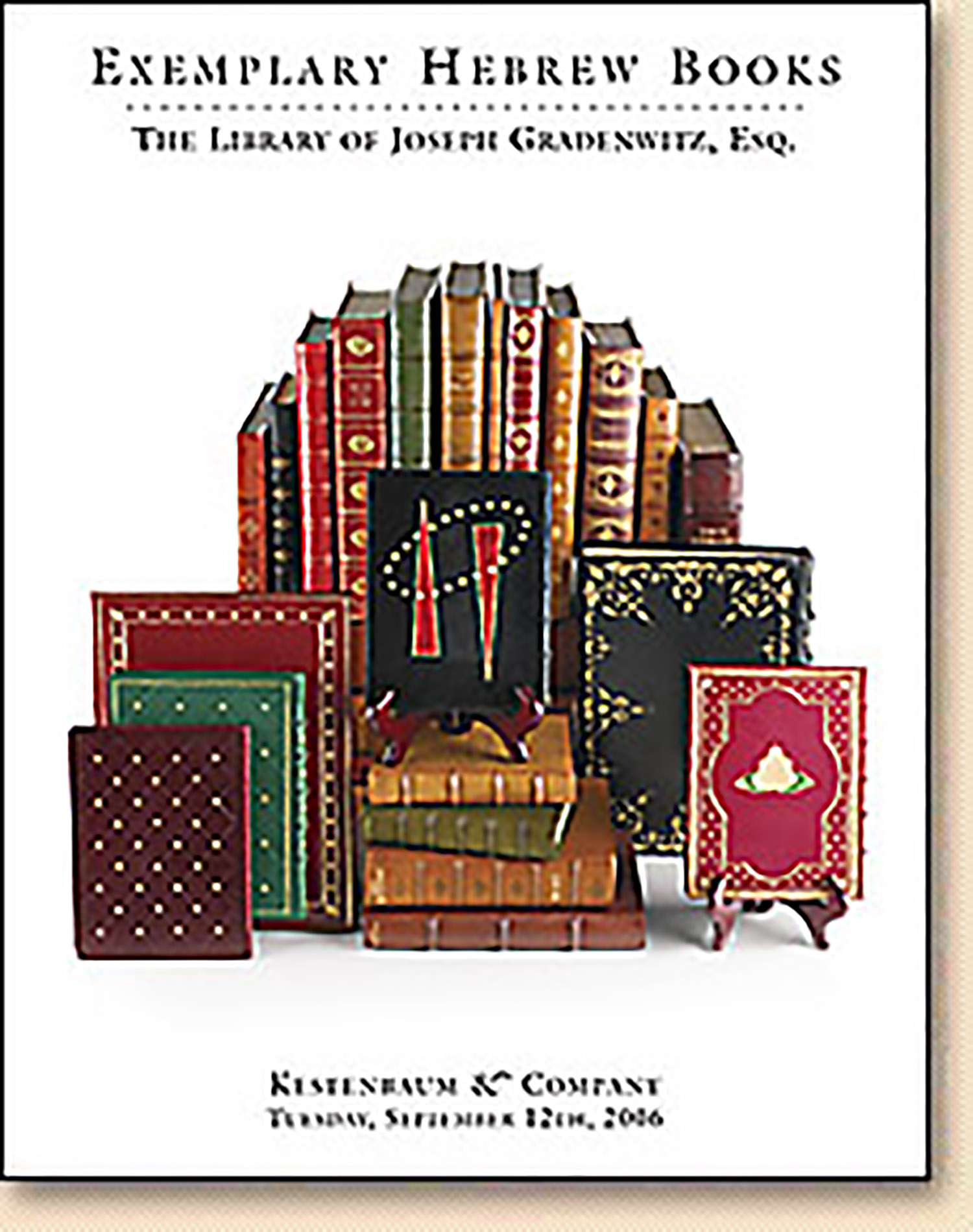Shulchan Aruch [“Prepared Table”: Code of Jewish Law]

AUCTION 34 |
Tuesday, September 12th,
2006 at 1:00
Exemplary Hebrew Books: The Library of Joseph Gradenwitz, Esq.
Lot 87
KARO, JOSEPH
Shulchan Aruch [“Prepared Table”: Code of Jewish Law]
Venice: Bragadin 1565
Est: $40,000 - $60,000
PRICE REALIZED $155,000
THE EXCEPTIONALLY RARE COMPLETE FIRST EDITION OF THE SHULCHAN ARUCH.
The publication of R. Joseph Karo’s Shulchan Aruch in 1565 is truly one of the defining moments in Jewish history.
“The social impact of the Shulhan Arukh was unprecedented. Its reception by Jews everywhere…meant that for all ordinary purposes one and the same manual was the de facto standard of reference. Even more, the Shulhan Arukh came to represent the Summa of Jewish life; it was the valid formulation of practical Judaism that henceforth dominated Israel…Few literary documents - apart from the Bible, the Talmud, and perhaps the Prayer Book - have acquired such immense practical and symbolic social value in Jewish history.” R.J. Zwi Werblowsky, Joseph Karo: Lawyer and Mystic (1980), pp. 7-8.
One speculates that the enormity of the event of the Spanish Expulsion in 1492 - which overnight emptied traditional bastions of Jewish learning in Iberia and forced the relocation of masses of Jews and the establishment of new centers of Jewish life and learning - brought about the new synthesis represented by the Shulchan Aruch. The author of this new synthesis, Joseph Karo (1488-1575), born in Spain immediately prior to the Expulsion, was taken by his parents to Turkey, and finally settled in Safed in the Upper Galilee. See EJ, Vol. V, cols. 194-5.
At the conclusion of Part I, colophon: “Completed on Monday, 2 Ellul, in the year ‘Elo-him chashavah le-tovah’ [5315 / 1555] in the village of Biriah in the Upper Galilee.” Part II concludes: “Completed Tuesday night, 2 Tammuz, 5,316 [1556] in Safed.” Part III concludes: “completed Tuesday, 19 Shevat, 5317” [1557] in Safed.” Part IV concludes; “Completed Thursday night, 16 Adar I, in the year “edothecha sichah li” [5318 / 1558]. Thus, R. Joseph Karo was able to produce his monumental work at the breakneck pace of a book per year! See Ch.Y.D. Azulai, Shem ha-Gedolim II, S-75.
r. eliezer delmedigo.
The Delmedigos were a family of German Jews who toward the end of the fourteenth century, settled on the Isle of Crete, where for several generations they served as rabbis of Candia (today Iraklion). The most illustrious of their number was Joseph Solomon Delmedigo (known by his Hebrew acronym YaSHa”R mi-Kandia). Eliezer, the paternal grandfather of YaSHa”R, presided over a Talmudic academy for several years (c.1560). Given that time-frame, it stands to reason that whichever student of R. Eliezer Delmedigo penned the note, was the original owner of the present copy of the Shulchan Aruch. As Crete at that time belonged to the Venetian Republic, it is not surprising that one of the copies of the Shulchan Aruch just published in Venice should be owned by a Cretan Jew. See JE, Vol. IV, pp. 356, 506.
1753 - a banner year in church censorship.
William Popper has written at great length of the Draconian measures taken by the Church in the year 1753. Hebrew books were forcibly confiscated from the homes of the Jews. Thirty-eight carts were filled from the ghetto of Rome alone. The dragnet for Hebrew books extended beyond the borders of Italy to the papal possessions in Provence. Thus, the ghettos of Avignon and Carpentras were not spared the wrath of the Inquisition. See Wm. Poppers, The Censorship of Hebrew Books (1969), pp.120-125.
“Giovanni Antonio Costanzi, the censor, had by this time compiled his third index of Hebrew books. The Index classified tHebrew books in three categories: those permitted, those permitted with corrections, and those absolutely forbidden.” Ibid., p.121. The Shulchan Aruch obviously fell under the second, intermediate category of “permitted with corrections.” The censor attests on the final page of the Shulchan Aruch, “Correto `a norma …” [Corrected in accordance with…]
Very rarely is the editio princeps of Shulchan Aruch found complete. Parts III and IV (Even ha-Ezer and Choshen Mishpat) are somewhat less scarce as opposed to the far more elusive first two parts, Orach Chaim and Yoreh De’ah, which, because of their usefulness in everyday Jewish life, were subjected to considerably more wear and tear. As a result, these two parts in particular are seldom obtainable. Not for some decades has a complete set of the 1565 Shulchan Aruch appeared at auction
